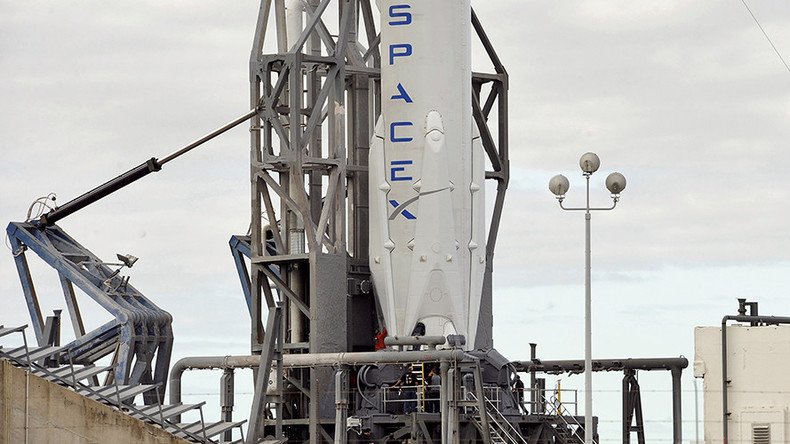SpaceX confident about late-night launch, not so much the landing

Following April’s smooth landing of the Falcon 9 rocket on board a floating platform, SpaceX is about to launch a payload to orbit again. Whether the booster will successfully land this time is another thing, though.
The rocket carrying the JCSAT-14, a Japanese communications satellite, will have a two-hour launch window from Cape Canaveral beginning at 1:22 am Easter Time on Thursday. RT will be live-streaming the launch overnight.
Unlike last month’s successful launch and landing though, this is a much more difficult task for Elon Musk's private space company in a number of ways.
SpaceX launch spine-tingling 360-degree video of Falcon 9 landing (VIDEO) https://t.co/a9zMVs2VcHpic.twitter.com/NOoumAng0x
— RT (@RT_com) April 30, 2016
The Falcon 9 has to deliver the large satellite into orbit 13,600 miles (22,000km) above the planet's surface. Last month’s launch involved the orbit only around 250 miles (400km) above the Earth.
As the rocket will need to accelerate at a much greater velocity to reach such a high orbit, it will use a lot more fuel in the process, reducing the amount available for the landing.
This is why Elon Musk described the mission as “very hot and fast” and “pushing the envelope.”
@gdoehne JCSat is pushing the envelope as a very hot and fast mission, so will land on the droneship. Next land landing in a few months.
— Elon Musk (@elonmusk) April 30, 2016
Like last month, SpaceX aims for the rocket to survive the return journey and land on the drone ship in the Atlantic Ocean, which is curiously called “Of Course I Still Love You”.
#SpaceX home movies: Watch 4 years of #Falcon9 development in 4 minutes https://t.co/x10wzpw6Ybpic.twitter.com/uQLVVu0IQS
— RT (@RT_com) April 16, 2016
While the weather conditions for the rocket’s landing will be favorable, SpaceX does not seem overly confident, due to the aforementioned high fuel consumption on the way up and the speed of the re-entry.
5 spectacular #SpaceX rocket fails, from launches to landings (VIDEO) https://t.co/896Dc6dEhGpic.twitter.com/Vf2YRvi1Gm
— RT (@RT_com) April 8, 2016
The rocket will “be subject to extreme velocities and re-entry heating, making a successful landing unlikely,” the company said in a statement.
This aspect of the process is an important one for SpaceX to pin down, as it will need to make the Falcon 9 rockets reliably reusable if it wants to make the space launches cost-effective enough to attract more clients.












